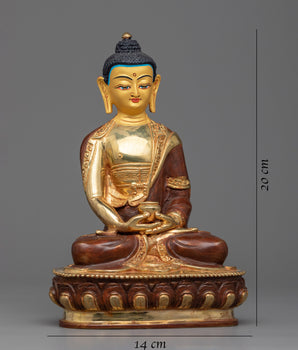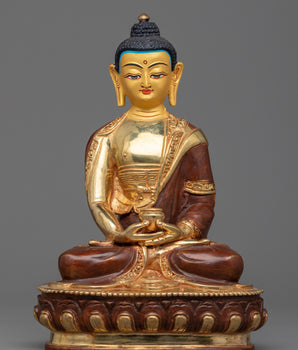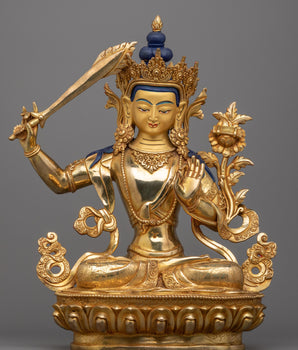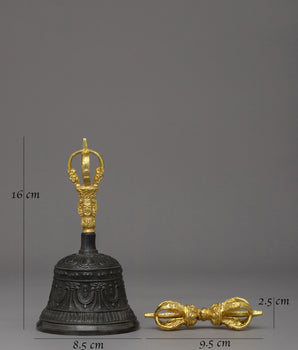In the realm of Buddhist philosophy and yoga, mudras—symbolic hand gestures—serve as bridges between the physical and the spiritual. Among them, the Dharmachakra Mudra stands as one of the most sacred and meaningful gestures. Known as the “gesture of teaching the path of wisdom,” it represents the moment the Buddha shared enlightenment with the world for the very first time.
This gesture marks the “Turning of the Wheel of Dharma”, when the Buddha delivered his first sermon at Sarnath after attaining enlightenment. The Dharmachakra Mudra is a profound reminder of the flow of wisdom, compassion, and the eternal cycle of spiritual awakening.
In this blog, we’ll explore its origins, spiritual meaning, iconography, how to perform it, and the deities who embody this powerful gesture across Buddhist traditions.
What is the Dharmachakra Mudra?
The term “Dharmachakra” comes from Sanskrit—“Dharma” (cosmic law, truth) and “Chakra” (wheel)—literally meaning “Turning the Wheel of Dharma.”
The Dharmachakra Mudra represents the moment when Buddha Shakyamuni began sharing the truths of enlightenment, setting into motion the wheel of spiritual teaching that would guide generations.
The gesture involves:
-
Forming a circle by touching the thumb and index finger of both hands, symbolizing the perfection and continuity of the Dharma.
-
The right hand faces outward (toward others), representing teaching and communication.
-
The left hand faces inward, symbolizing introspection and wisdom.
Together, they express the union of inner realization and outer expression—the perfect balance of understanding and sharing.
Symbolism and Deeper Meaning of Dharmachakra Mudra
Every element of this mudra holds profound significance:
-
The Wheel (Chakra) symbolizes the eternal movement of cosmic law and spiritual truth.
-
Eight spokes of the Dharma Wheel represent the Noble Eightfold Path—Right View, Thought, Speech, Action, Livelihood, Effort, Mindfulness, and Concentration.
-
Right Hand (Wisdom) signifies imparting knowledge to the world.
-
Left Hand (Method) represents the compassion and intention behind teaching.
-
Circle formed by the fingers signifies perfection, continuity, and the interconnectedness of all beings.

This sacred gesture captures the Buddha’s first act of teaching and the harmonious balance between wisdom, compassion, and communication—the essence of spiritual leadership.
Dharmachakra Mudra in Buddhist Art, Iconography & Deities
Throughout Buddhist history, the Dharmachakra Mudra has been immortalized in temple art, statues, and thangka paintings. It’s not only associated with the historical Buddha but also with divine representations across Theravada, Mahayana, and Vajrayana traditions.
1. Buddha Shakyamuni (Gautama Buddha)
-
Most commonly depicted using the Dharmachakra Mudra at Sarnath, marking his first sermon.
-
Symbolizes the moment the Buddha began spreading his enlightenment to humanity.
2. Vairocana Buddha
-
The cosmic or universal Buddha in Mahayana and Vajrayana Buddhism.
-
Depicted at the center of the Five Dhyani Buddhas, Vairocana represents ultimate truth and universal wisdom.
-
His use of the Dharmachakra Mudra expresses his eternal role in teaching all Buddhas and beings across realms.

View our Collection of Buddha Thangka
3. Maitreya (The Future Buddha)
-
Portrayed with this mudra, symbolizing the future turning of the Dharma Wheel when he reappears to teach humanity once again.
4. Manjushri (Bodhisattva of Wisdom)
-
Occasionally shown in this mudra, especially in esoteric iconography, signifying his role in transmitting profound teachings through wisdom.
Vajrayana Masters and Lineage Gurus
In Tibetan Buddhism, many enlightened teachers and spiritual masters adopt this gesture in art and statues, signifying their authority to transmit the Dharma and guide others toward liberation. These depictions serve as more than artistic expressions—they are visual teachings, reminding practitioners of the boundless compassion and wisdom that flow through the act of turning the Wheel of Dharma.
1. Atisha (982–1054 CE)
-
Atisha, the Indian‑Tibetan Buddhist teacher whose influence helped re‑establish Buddhism in Tibet, is cited in iconographic references among “Indian and Tibetan masters; Atisha, Asanga, Tsongkhapa, and Sakya Pandita” as being depicted with the Dharmachakra Mudra. In such depictions, the gesture emphasises his role in “turning the wheel” of the Dharma for the Tibetan tradition.
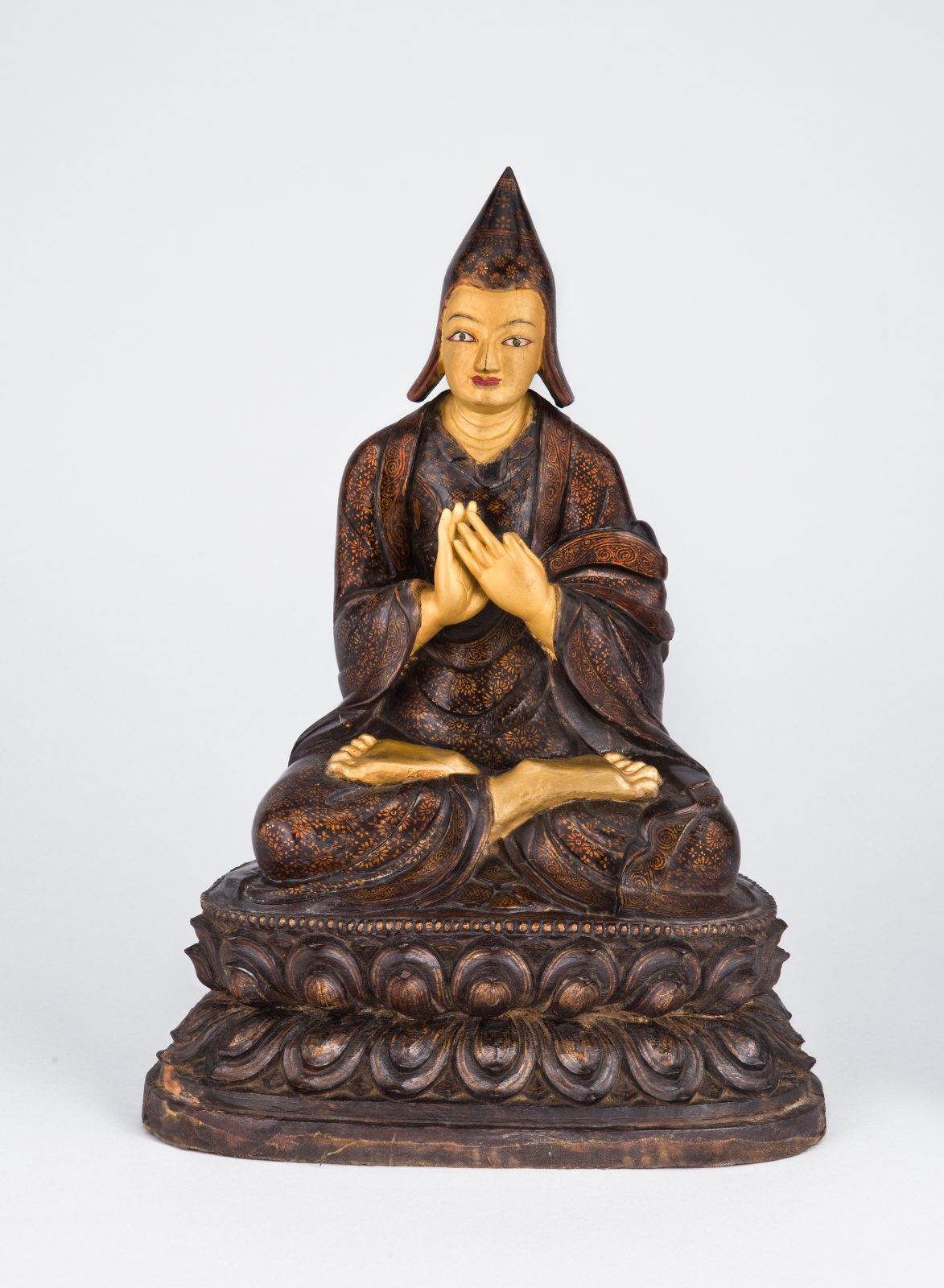
2. Asanga (c. 4th–5th century CE)
-
Asanga is another master listed in the same source alongside Atisha, Tsongkhapa and Sakya Pandita as being depicted with the Dharmachakra Mudra. He is primarily known as a Mahayana Buddhist philosopher, so the iconography underscores his “teaching/wheel turning” role.
3. Tsongkhapa (1357–1419 CE)
-
Tsongkhapa, founder of the Gelug school of Tibetan Buddhism, is referenced in iconography sources as one of the masters depicted with a variant of this mudra. His portrayal with the teaching gesture emphasises his authoritative role and embodies the transmission of the Dharma.

Our Collection of Buddhist Master Thangka
4. Sakya Pandita (1182–1251 CE)
-
Sakya Pandita, one of the great masters of the Sakya tradition, is likewise cited among those depicted with the Dharmachakra Mudra. His iconographic representation with the gesture points to his role as a transmitter of the Dharma teachings.

5. Panthaka (One of the Sixteen Arhats)
-
The figure Panthaka is described in Buddhist art sources as “often depicted holding a sacred book in his left hand while performing the Dharmachakra Mudra with his right” — indicating his role as a teacher/guardian of the Dharma. Though not as widely referenced as the major masters above, this indicates the gesture extends into broader iconographic roles beyond just Buddhas and major lineage figures.
Conclusion:
The Dharmachakra Mudra is far more than a symbolic hand position—it is a spiritual bridge between knowledge and compassion, teacher and student, self and universe.
From Buddha Shakyamuni to Vairocana and Maitreya, this gesture embodies the timeless act of sharing enlightenment. When you practice this mudra, you’re not just mimicking an ancient form—you’re invoking the very essence of Dharma within yourself.
Let the wheel of Dharma turn in your own heart, and may its wisdom guide your every thought, word, and action.
Also read our Blog about Sacred Mudras and their hidden meanings







